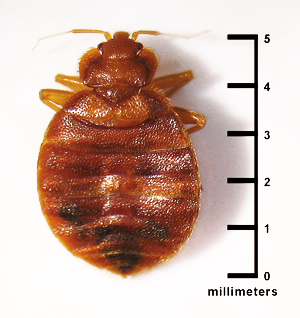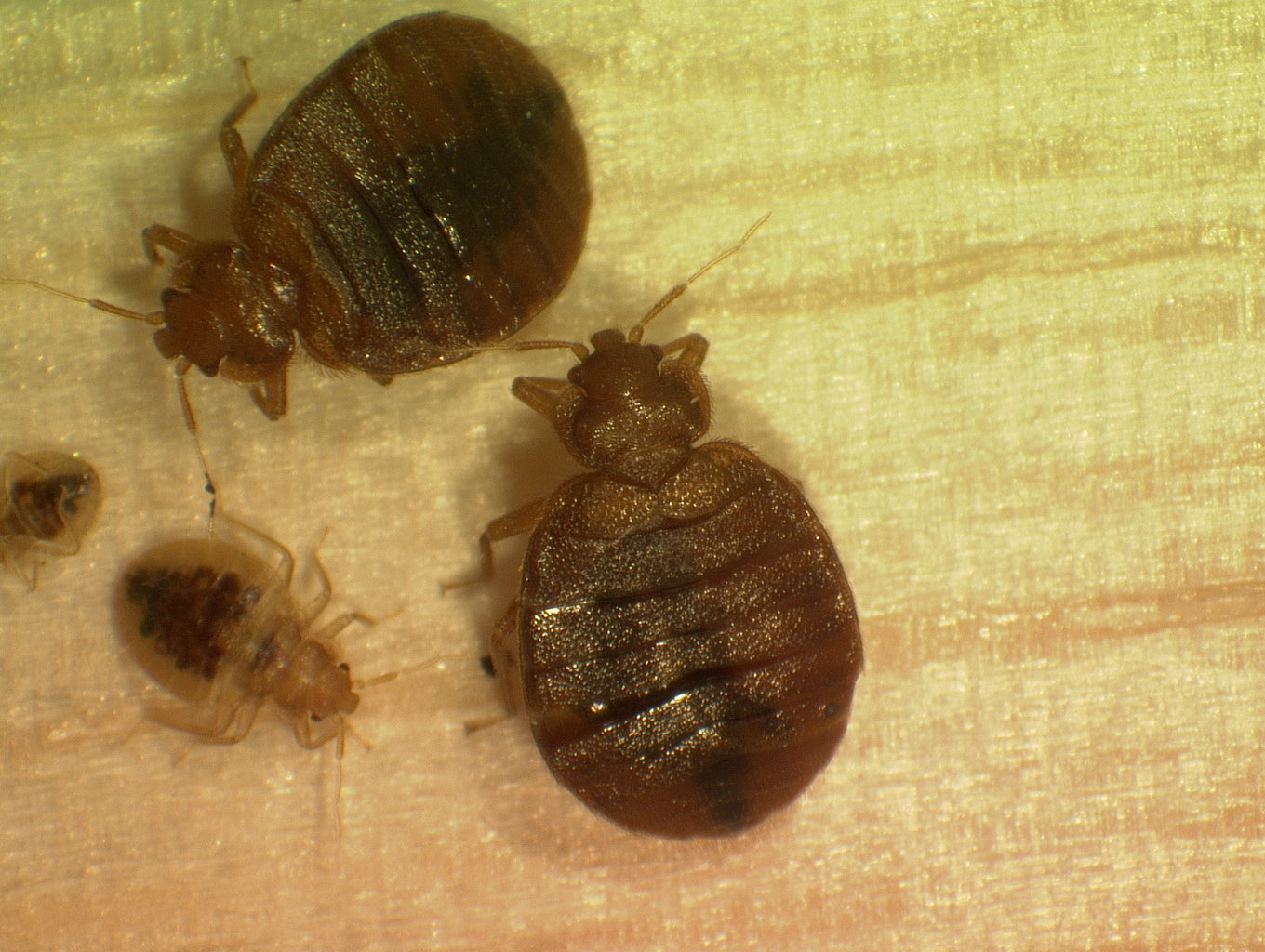Bed Bugs and Schools
Basics

Photo credit: CDC
Bed bugs have long been a pest – feeding on blood, causing itchy bites and generally irritating their human hosts. They are successful hitchhikers and can move from an infested site to furniture, bedding, baggage, boxes and clothing.
Although they typically feed on blood every five to ten days, bed bugs can be quite resilient, living for several months without feeding.
The common bed bug is Cimex lectularius.
Life Cycle
Bed bugs produce 5-7 eggs per week and can lay up to 500 over the course of their life. They grow fastest and lay the most eggs at 80 degrees F. Learn more about the bed bug life cycle.
Health Concerns
Although bed bugs are not known to transmit disease, their presence may cause distress and health issues for many people.
The following health issues are associated with infestations of bed bugs:
- Minor skin irritations that itch.
- Itching can lead to excessive scratching, which can increase the chance of a secondary skin infection.
- Moderate allergic reactions, which require medical attention.
- Severe allergic reactions, which require immediate medical attention.
- Increased stress is caused by minor skin irritations and the loss of sleep.
For more information on the health issues associated with bed bugs:
- Bed Bugs: a Public Health Issue
- Bed Bug FAQs - a 1-page document by the CDC
- Mayo Clinic's Bed Bugs page - this page provides information on the symptoms, causes, risk factors, diagnosis and treatment for bed bugs.
- CDC - Bed Bugs
Bed Bug Fact Sheets and Other Resources

Photo credit: Virginia Tech University
- EPA's Top Ten Bed Bug Tips
- EPA Bed Bug Guidance for Parents
- EPA Bed Bug Guidance for School Nurses
- EPA Bed Bug Guidance for Administrators, Teachers and Staff
- Fact Sheet on Bed Bugs from The University of Kentucky's College of Agriculture
- Bed Bugs Fact Sheet from the Ohio State University Extension
- Multiple Bed Bug Fact Sheets and Action Plans from the Virginia Department of Agriculture and Consumer Service
Steps for Success in Dealing with Bed Bugs in Schools
If a bed bug is found on a child in school, it does not mean the child brought the bed bug into the school. Bed bugs do not infest people; they only feed on them. Bed bugs can crawl onto or off of a person (or their belongings) at any time. The following actions will be helpful in dealing with any bed bug sightings:
- Educate everyone.
- Have an action plan.
- Remain calm.
- One bed bug is NOT an infestation - inspect and monitor.
- Infested classrooms require professional treatment and parental notification.
- EPA recommends you use IPM to reduce pesticide exposure; IPM is a smart, sensible and sustainable approach to pest management.
IPM for Bed Bugs - offers numerous resources for bed bug prevention, management and treatment.
